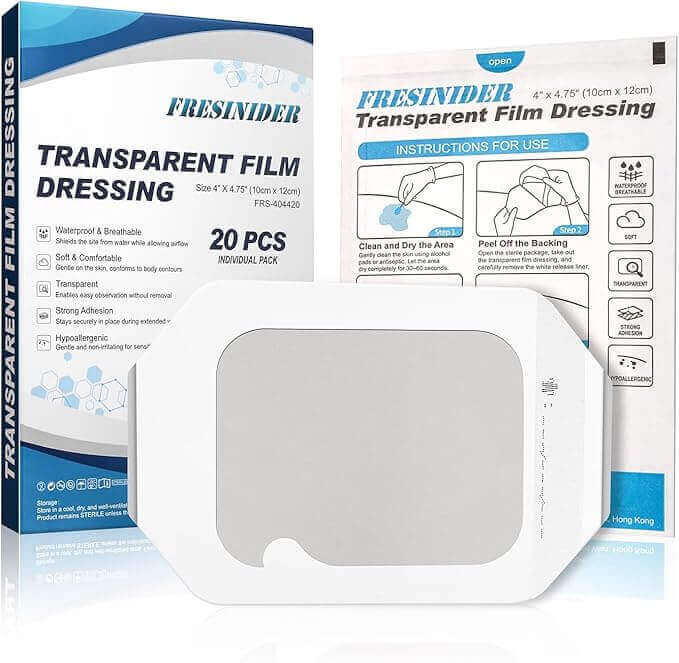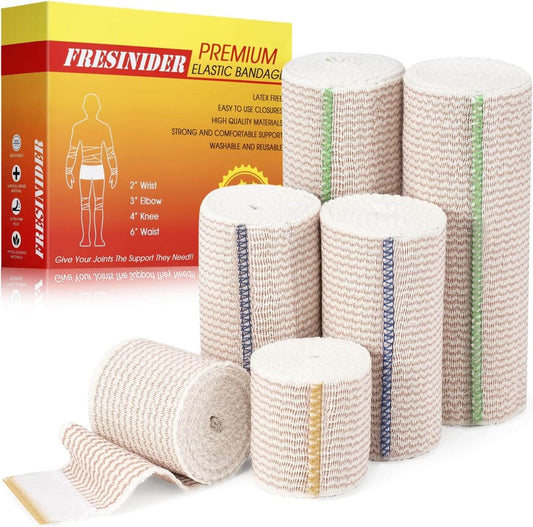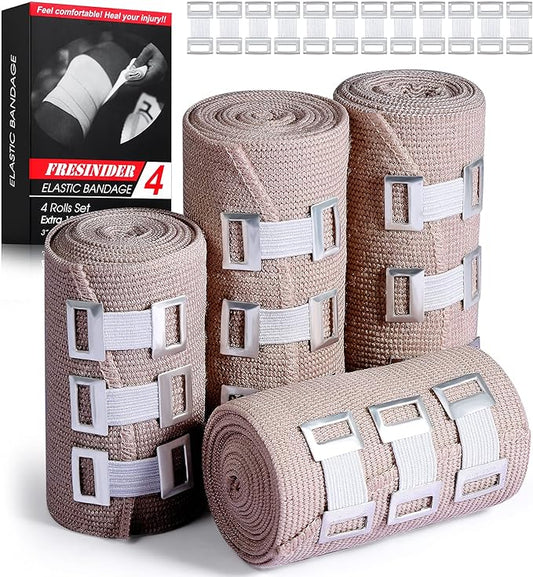Introduction. Transparent film dressings are the go-to when you need a clean, waterproof, breathable cover you can see through. If you’re caring for a small post-op incision, protecting an IV site or sensor, or giving a fresh tattoo a short-term shield, this guide explains exactly what a transparent film dressing is and how it works. You’ll learn when to use it (and when not to), how to choose the right size, apply it step by step, wear-time and shower tips, the difference between sterile and non-sterile versions, and quick fixes for edge-lift or cloudiness—practical, plain-English guidance for safe everyday use. Safety: Not for moderate–heavy exudate, tunneling wounds, or active infection. Seek professional advice if redness, fever, odor, or irritation occurs.
What Is a Transparent Film Dressing?
A transparent film dressing is essentially a flexible “second skin.” The film is made of medical-grade PU with a pressure-sensitive, low-irritation adhesive on one side, protected by a release liner until application. Many versions include a frame delivery (paper/plastic window) that lets you position the dressing precisely—especially on curved or high-movement areas—then remove the frame without disturbing the seal.
Unlike absorbent dressings, film dressings are non-absorbent. They do not soak up fluid; instead, they create a clean, breathable barrier. This is why they work best on low-exudate, superficial sites or as a clear cover over other primary dressings, IV sites, sensors/patches, or recent tattoos. Depending on labeling, some variants are sterile (appropriate for clean, superficial wounds) while others are non-sterile (intended for cover/securement only).
- What it does: provides a splash/shower barrier, supports moisture-vapor exchange (MVTR), and allows visual checks without frequent removal.
- What it doesn’t do: it doesn’t handle moderate/heavy drainage and isn’t suited for infected, tunneling, or cavity wounds.
- Typical build: PU film + latex-free adhesive + release liner; often with a removable application frame.
FRESINIDER Transparent Film Dressing
Waterproof & breathable PU film · Individually wrapped
- Waterproof, breathable “second-skin”for showers and daily wear—helps keep sites clean and dry.
- Gentle, latex-free adhesive for sensitive skin; thin film flexes on curves and joints for comfortable wear.
- Individually wrapped; easy on/off—ideal for IV sites, small incisions, tattoos, blisters, and minor cuts.
How It Works
- Barrier & protection: The continuous PU film helps block water, dirt, and external contaminants during daily activities and short showers.
- Breathability (MVTR): Semi-permeable structure allows water vapor to pass, helping reduce skin maceration and improving comfort.
- See-through monitoring: Transparency lets you check the site without peeling the dressing, reducing disruption to the wound area.
- Conformability & seal: Thin, elastic film conforms to curves; performance depends on edge sealing—wrinkles or gaps can lead to leakage.

When to Use / When Not to Use
Use For
- Post-operative small incisions with minimal drainage
- IV sites and sensors/patches (e.g., CGM) — for visibility
- Tattoo aftercare — short-term protection and friction reduction
- Small cuts/abrasions; friction prevention on heels/toes
Not For
- Moderate–heavy exudate (use an absorbent dressing instead)
- Tunneling/cavity wounds or suspected infection
- Long soaking/swimming or prolonged baths
- Direct application to open wounds if the product is non-sterile
Sizing & Selection
- 2.3" × 2.75" — IV sites, sensors/patches, tiny cuts
- 4" × 4.75" — Small/medium incisions, tattoos, small abrasions
- 6" × 8" — Larger coverage or a shower shield over other dressings
Tip: You can trim to shape; rounding the corners helps reduce edge lift on high-movement areas.

How to Apply (4 Steps)
- Prep: Cleanse the surrounding skin and dry completely. Avoid ointments/oils under the film (they reduce adhesion).
- Position: Place the dressing; peel the frame/release liner to expose adhesive without stretching the skin.
- Smooth: Lay from the center outward, smoothing away wrinkles and air bubbles.
- Seal: Press the edges firmly for 10–30 seconds to secure the seal.

Wear Time & Shower
- Wear time: Up to 3–7 days when skin is clean/dry and exudate is minimal. Replace sooner if needed.
- Shower: Short showers and splashes are fine if edges remain sealed. Avoid prolonged soaking or swimming. Pat dry afterward.
Gentle Removal
Lift one corner and peel back slowly at a low angle along the skin while supporting the skin ahead of the peel line. If strongly adhered, use warm water or an alcohol wipe along the edge to ease release.

Special Scenarios
IV Sites & Sensors
- Transparent film allows continuous visual inspection of the insertion/adhesion area.
- Replace if moisture accumulates, edges lift, or skin shows redness/irritation.
Tattoo Aftercare
- Use for short-term protection and to reduce friction early on; discontinue or change if sweat/exudate builds or irritation occurs.
- Follow your artist/clinician’s aftercare plan for cleaning and moisturizing.

Troubleshooting Matrix
| Issue | Likely Cause | What to Do |
|---|---|---|
| Edge lift | Skin not fully dry; hair/oil; insufficient edge pressure; size too small | Clean & dry thoroughly; consider trimming hair; press edges 10–30s; size up |
| Cloudy/condensation | Accumulated sweat or exudate under the film | Replace; if drainage increases, switch to an absorbent dressing |
| Won’t stick | Ointment under film; humid skin; high motion area | Avoid ointments; ensure complete dryness; use larger size or add fixation |
| Irritation | Adhesive sensitivity or mechanical trauma on removal | Use barrier film; remove at a low angle; consider soft-silicone foam for fragile skin |
Sterile vs Non-Sterile & Labeling
- Sterile: May be used directly over clean, superficial wounds as labeled.
- Non-sterile: Intended for cover/securement (e.g., over gauze or sensors). Do not apply directly to open wounds.

How It Compares to Other Dressings
| Type | Exudate Handling | See-Through | Typical Wear Time* | Comfort | Best For |
|---|---|---|---|---|---|
| Transparent Film | None–Low | Yes | Up to 3–7 days | Ultra-thin & flexible | Incisions (low exudate), IV, sensors, tattoos |
| Hydrocolloid | Light–Moderate | No | Several days | Cushioned | Superficial wounds with light-moderate exudate |
| Silicone Foam (Bordered) | Moderate–High | No | Change as needed | Soft silicone contact | Higher exudate, pressure injuries, donor sites |
*Actual wear time depends on skin prep, location, and fluid.
FAQs
Is a Transparent Film Dressing Waterproof?
It provides a splash/shower barrier when edges are well sealed. Avoid long soaking or swimming. Pat dry after showering and replace if leakage, cloudiness, or edge-lift occurs.
How Long Can I Wear It?
Up to 3–7 days when skin is clean/dry and exudate is minimal; replace sooner if the dressing saturates or lifts.
Can I Put Ointment Under the Film?
Not recommended. Oils/ointments reduce adhesion and can cause leakage.
Can I Use it on Infected or Heavily Draining Wounds?
No. Seek clinician guidance and consider an absorbent dressing instead for moderate–heavy exudate.
Safety: Not for moderate–heavy exudate, tunneling wounds, or active infection. Stop use and consult a professional if redness, fever, odor, or irritation occurs.






